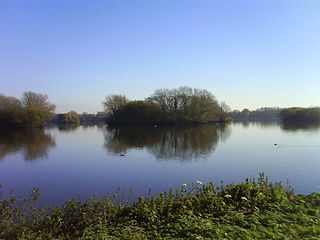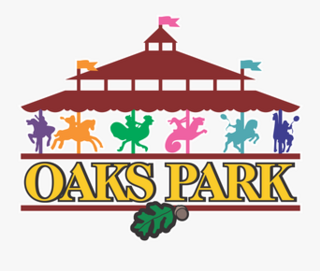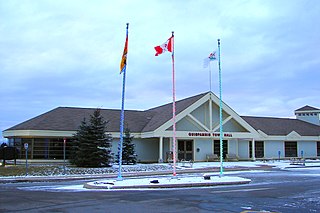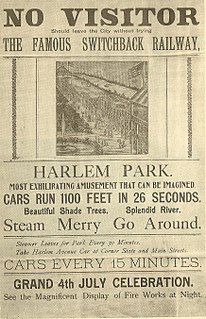
Kennywood is an amusement park located in West Mifflin, Pennsylvania, just southeast of Pittsburgh. The park first opened on May 30, 1899, as a trolley park attraction at the end of the Mellon family's Monongahela Street Railway. It was purchased in 1906 by F. W. Henninger and Andrew McSwigan, both of whom later formed the family-owned Kennywood Entertainment Company. The company later sold Kennywood, along with four other parks, in 2007 to Parques Reunidos, an international entertainment operator based in Spain. The amusement park features various structures and rides dating back to the early 1900s. Along with Rye Playland Park, it is one of only two amusement parks designated as a National Historic Landmark. Kennywood is also one of only thirteen trolley parks in the United States that remains in operation.

Knoebels Amusement Resort is a family-owned and operated amusement park, picnic grove, and campground in Elysburg, Pennsylvania. Opened in 1926, it is America's largest free-admission park. The park has more than 60 rides including three wooden roller coasters, three steel roller coasters, a 1913 carousel, and a haunted house dark ride.

Kingsbury Water Park is a country park in north Warwickshire, England, not far from Birmingham and lying on the River Tame. It is owned and managed by Warwickshire County Council. It has fifteen lakes situated in over 600 acres (2.4 km2) of country park. It is renowned for its birdlife, and is popular with birdwatchers. It is bordered on the western edge by the Birmingham and Fazeley Canal.

Oaks Park is a small amusement park located 3.5 miles (5.6 km) south of downtown Portland, Oregon, United States. The park opened in May 1905 and is one of the oldest continually operating amusement parks in the country.

Fish Creek Park is an urban provincial park that preserves the valley of Fish Creek in the southern part of Calgary, Alberta, Canada. It is bordered on three sides by the city, and on the west by the territory of the Tsuu T’ina Nation (Sarcee), a First Nation.

Bowness is a neighbourhood and former town in west Calgary, Alberta, Canada. The former town was amalgamated into the City of Calgary in 1964.

Idlewild and Soak Zone, commonly known as Idlewild Park or simply Idlewild, is a children's amusement park in the Laurel Highlands near Ligonier, Pennsylvania, United States, about 50 miles (80 km) east of Pittsburgh, along US Route 30. Founded in 1878 as a campground along the Ligonier Valley Railroad by Thomas Mellon, Idlewild is the oldest amusement park in Pennsylvania and the third oldest operating amusement park in the United States behind Lake Compounce and Cedar Point. The park has won several awards, including from industry publication Amusement Today as the best children's park in the world.

Audubon Park is a municipal park located in the Uptown neighborhood of New Orleans, Louisiana, in the United States. It is approximately 350 acres. The park is approximately six miles to the west of the city center of New Orleans and sits on land that was purchased by the city in 1871. It is bordered on one side by the Mississippi River and on the other by St. Charles Avenue, directly across from Loyola University and Tulane University. The park is named in honor of artist and naturalist John James Audubon, who began living in New Orleans in 1821.

Pullen Park is a 66.4-acre (0.27 km2) public park immediately west of downtown Raleigh, North Carolina. It is located on Ashe Avenue and is adjacent to the Main and Centennial campuses of North Carolina State University, covering an area between Western Boulevard and historic Hillsborough Street. Founded in 1887, Pullen Park is the oldest public park in North Carolina.

Camden Park is a twenty-six acre amusement park located near Huntington, West Virginia. Established in 1903 as a picnic spot by the Camden Interstate Railway Company, it is one of only thirteen trolley parks that remain open in the United States. Whereas most trolley parks were located at the end of trolley lines, Camden Park is unusual in that it was built where riders traveling between Huntington and nearby cities would stop to change lines. Not long after opening, the park soon gained a carousel and other roadside attractions. Camden Park is West Virginia's only amusement park. The park is home to more than thirty rides and attractions, including a full-size traditional wooden roller coaster, the Big Dipper, and several other vintage rides.

Frances Slocum State Park is a 1,035-acre (419 ha) Pennsylvania state park in Kingston Township, Luzerne County, Pennsylvania, in the United States. Frances Slocum Lake is a 165-acre (67 ha) man-made, horseshoe-shaped lake that is a popular fishing and boating destination. The park is 5 miles (8.0 km) from Dallas and 10 miles (16 km) from Wilkes-Barre.

Mt. Pisgah State Park is a 1,302-acre (527 ha) Pennsylvania state park in Smithfield, Springfield, Troy and West Burlington Townships, Bradford County, Pennsylvania in the United States. The park is located almost exactly halfway between Troy and Towanda, along Pennsylvania State Route 3019, near U.S. Route 6, at the base of Mt. Pisgah. The park is bordered by Mill Creek, Mt. Pisgah County Park and State Game Land 289. Mill Creek which flows through the park has been dammed and forms Stephen Foster Lake a 75-acre (30 ha) man-made lake.

Sunnyside is an innercity community in Calgary, Alberta located on the north side of the Bow River immediately adjacent to Calgary's downtown. The community partners with the neighbouring community of Hillhurst to form the Hillhurst-Sunnyside Community Association. The combined communities have an area redevelopment plan in place, revised in 2009.

The Sikome Aquatic Facility, commonly referred to as Sikome Lake, is a man-made lake in the city of Calgary, Alberta, Canada. It is located in the southeast quadrant of the city, within the Fish Creek Provincial Park, and is part of the Bow River basin. It lies at an elevation of 1,005 m (3,297 ft) and has a surface of 0.4 km2.

The Centreville Amusement Park is a children's amusement park located on Middle Island, part of the Toronto Islands, offshore of Toronto, Ontario, Canada. The park has been operated by the Beasley family since 1967, currently through Etobicoke-based William Beasley Enterprises Limited, on land leased from the City of Toronto government and is open daily during the summer. Beasley also operates the "Far Enough Farm" adjacent to the park.

Quispamsis is a Kings County suburb of Saint John, New Brunswick, located 20 kilometres (12 mi) to the northeast in the lower Kennebecasis River valley. Its population was 18,245 as of the 2016 census.

Sunnyside Bathing Pavilion is a landmark public pavilion in the Sunnyside lakefront area of Toronto, Ontario, Canada. Built in 1922, its original function was to provide changing facilities for swimming in Lake Ontario, however lake conditions were often too cold and an adjoining public swimming pool was built in 1925. The Pavilion was renovated in 1980 to provide updated changing facilities and a café along the beach and a garden.
The Pearce Estate Wetland is a city park located in Calgary, Alberta. The park occupies 21 hectares along the Bow River to the east of downtown Calgary. It is described as "constructed wetlands filled with native plants and animals". The land was donated to the city around 1929 by then prominent Calgarian William Pearce.
Flint Park was a theme park located in the city of Flint, Michigan, USA. The park was located next to Flint Park Lake on the north side of the city. The park, settled on 40 acres of land next to the 19-acre (77,000 m2) lake, opened on May 30, 1921 and closed down in 1961. The amusement park was torn down in late 1963 or early 1964.

Harlem Park was an amusement park and Chautauqua site in Rockford, Illinois that operated from 1891 to 1928. It was located on 47 wooded acres (0.2 km2) east of Harlem Blvd. on the west bank of the Rock River on Rockford's north side. The main entrance was located between Harper and Brown Avenues.





















